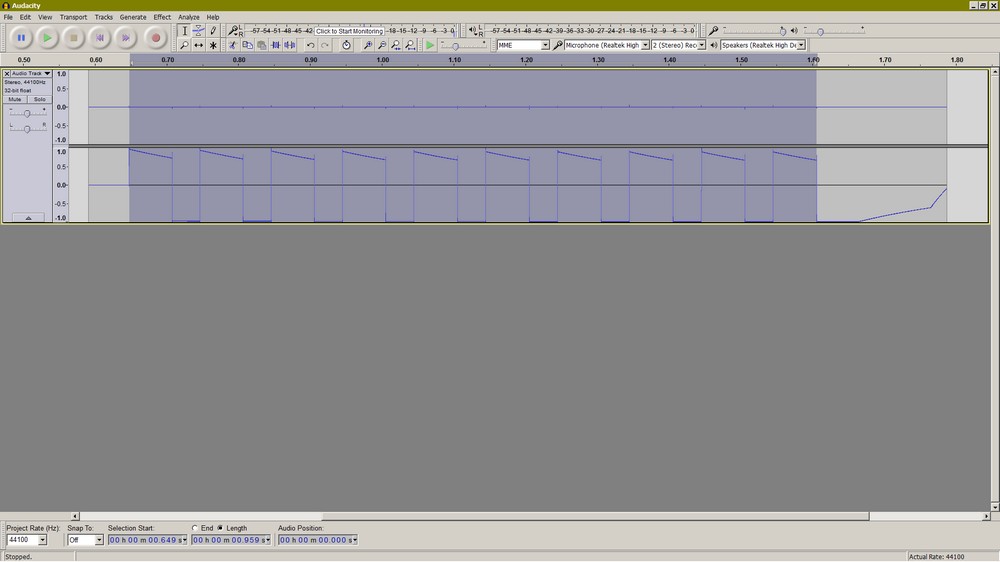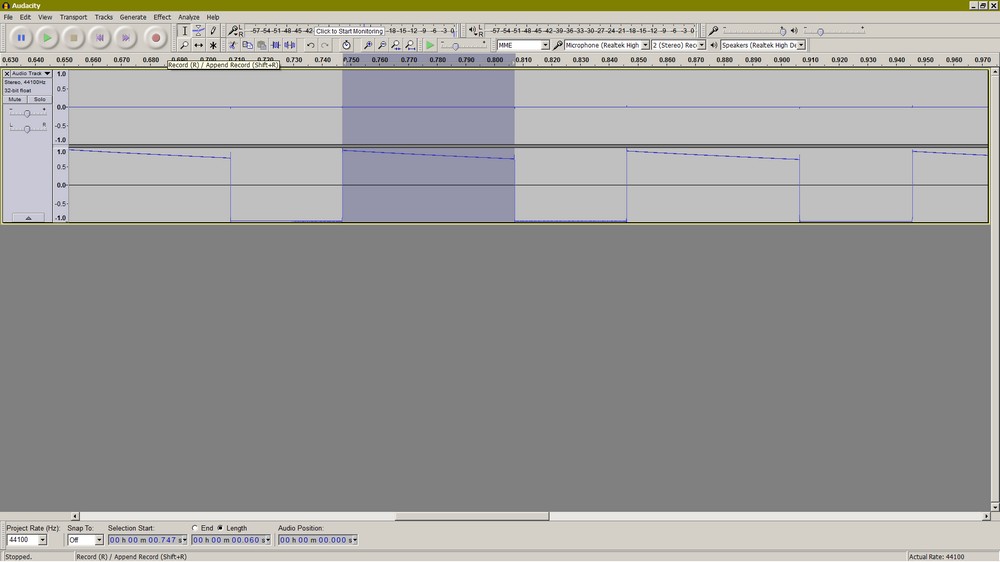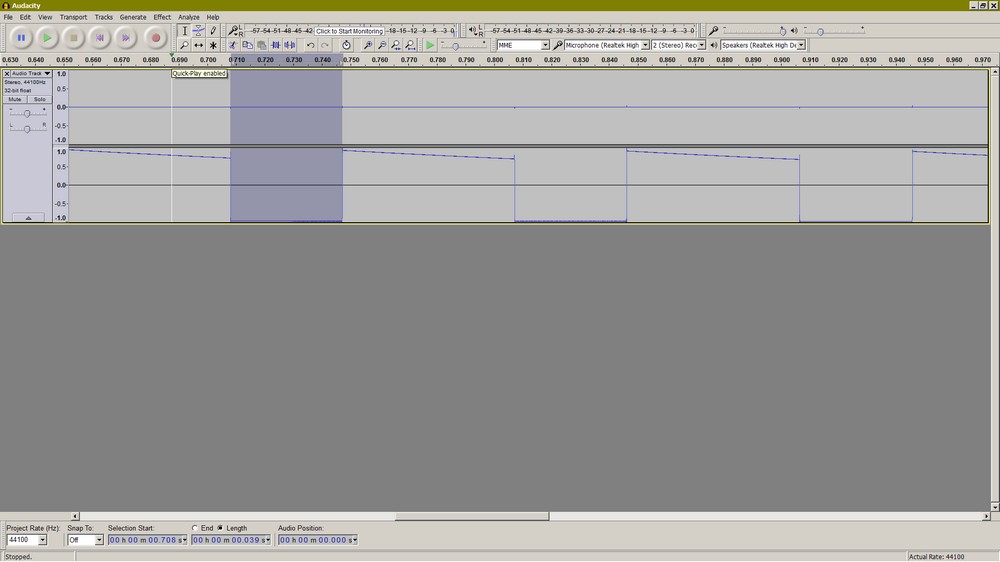Grab a 10-Pulse Wave
Load Audacity program.Select microphone
Set for high volume
Connect cable to dial impulse spring terminals: terminals Y and BK in a Western Electric dial, terminals on Automatic Electric dials are not identified. Insert the 1/8-inch plug.
Wind the dial for a number 0 and hold it. Press the Audacity record button
Unplug the 1/8-inch plug if a good wave form is shown, or press the
Use the select button
Zoom
Check the Dial Frequency
Use the select buttonAt the bottom of the screen, click the length button
If 10 pulses are selected and the length is 1.000 second, the dial frequency is perfect. A slow dial wili have a length greater than 1.1 seconds; a fast one less than .09 seconds.
Check the Dial Make/Break Ratio
Zoom the displayUse the select button
Look at the time in the length box
Use the select button
Look at the time in the length box
Divide the break pulse time by the sum of both the break pulse time and the make pulse time. For a perfect dial this ratio will be 0.60. The limit is 0.52 to 0.66; but at my house the Verizon Ont likes 0.56, so you may want to set a different target.
Divide the make pulse time by the sum of both the break pulse time and the make pulse time. For a perfect dial this ratio will be 0.40. The limit is 0.34 to 0.48;my target is 0.43.
An example:
break length = 000h00m00.060
make length = 000h00m00.039
break ratio =.060 / .060 + .039 = .060 / .099 = .606 = 60.6%


